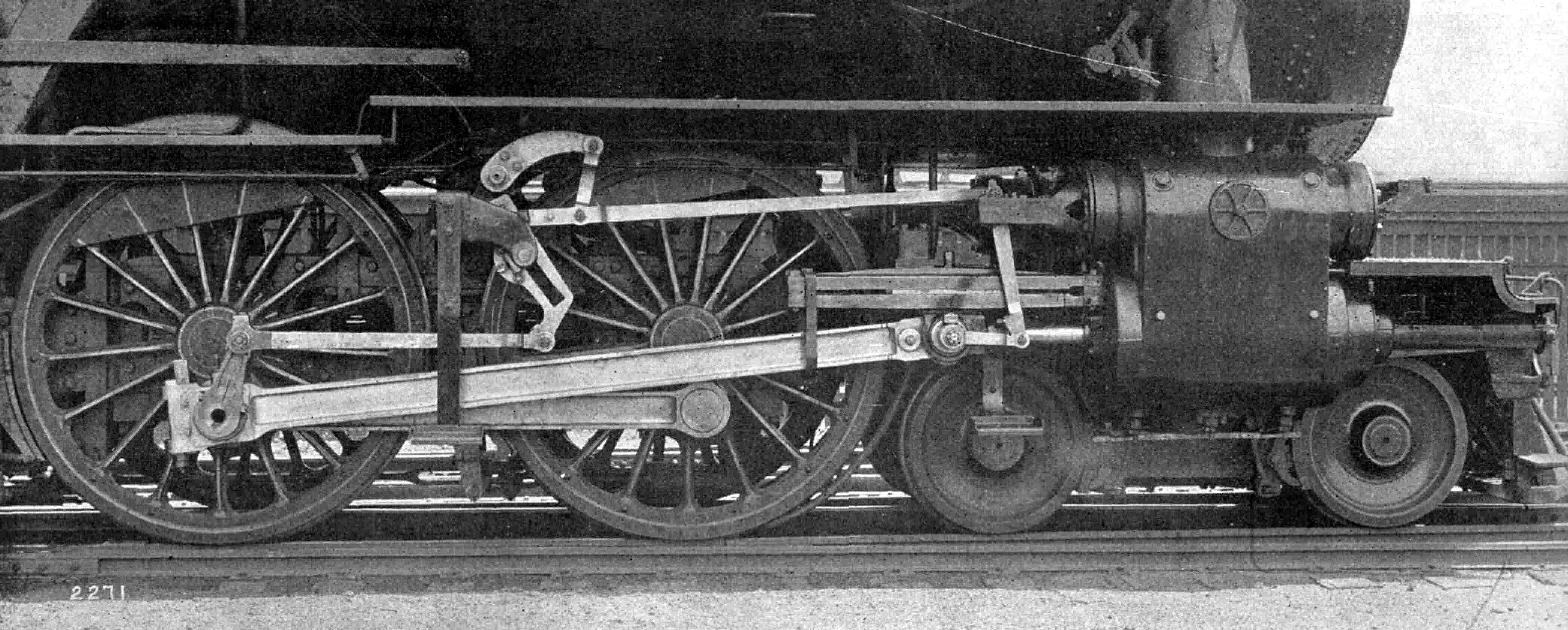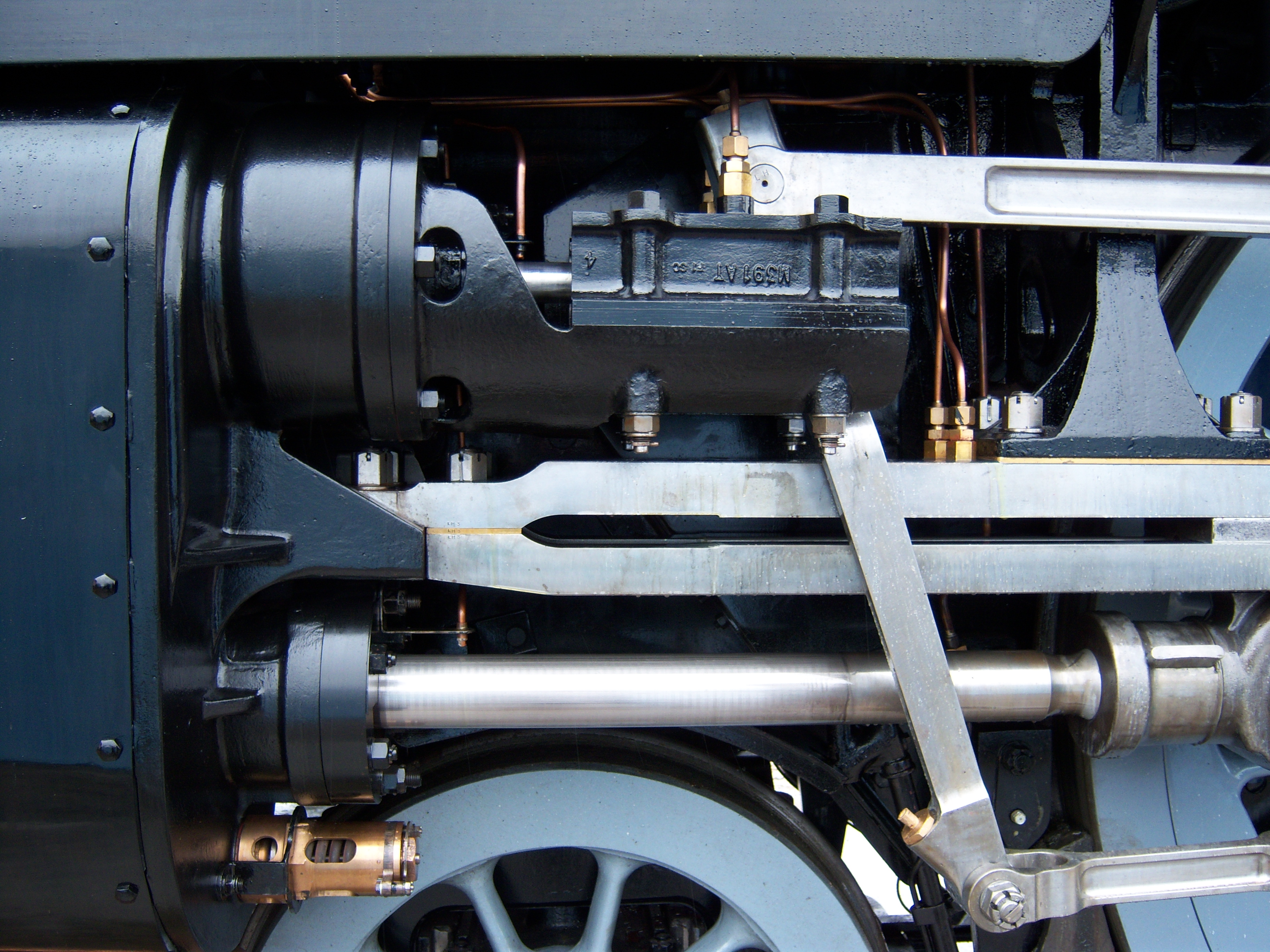|
LDE – Comet
The German locomotives ''Comet'', ''Faust'', ''Blitz'' and ''Windsbraut'' were four of the first locomotives on the Leipzig–Dresden Railway Company (LDE). They were four-coupled engines, that Rothwell and Company had built in Manchester between 1835 and 1838. ''Comet'' was the first locomotive to be delivered to Saxony. She arrived at Leipzig in November 1836, packed in 15 crates. After her reassembly testing began on 28 March 1837 and she was then deployed on railway construction duties. She was followed by ''Blitz'', ''Windsbraut'' and ''Faust'', the last named being similar in dimensions to ''Comet''. The other two were somewhat larger (their technical data, where different, are given in the table after a "/") All the engines had a cylindrical firebox and boiler barrel, an oak locomotive frame reinforced with sheet iron and inside cylinders and valve gear. In 1842, following a serious accident in France the operation of twin-axled locomotives was banned and the engines wer ... [...More Info...] [...Related Items...] OR: [Wikipedia] [Google] [Baidu] |
0-4-0
Under the Whyte notation for the classification of steam locomotives, represents one of the simplest possible types, that with two axles and four coupled wheels, all of which are driven. The wheels on the earliest four-coupled locomotives were connected by a single gear wheel, but from 1825 the wheels were usually connected with coupling rods to form a single driven set. The notation 0-4-0T indicates a tank locomotive of this wheel arrangement on which its water and fuel is carried on board the engine itself, rather than in an attached tender. In Britain, the Whyte notation of wheel arrangement was also often used for the classification of electric and diesel-electric locomotives with side-rod-coupled driving wheels. Under the UIC classification used in Europe and, in more recent years, in simplified form in the United States, a 0-4-0 is classified as B (German and Italian) if the axles are connected by side rods or gearing and 020 (French), independent of axle motoring. The ... [...More Info...] [...Related Items...] OR: [Wikipedia] [Google] [Baidu] |
Valve Gear
The valve gear of a steam engine is the mechanism that operates the inlet and exhaust valves to admit steam into the cylinder and allow exhaust steam to escape, respectively, at the correct points in the cycle. It can also serve as a reversing gear. It is sometimes referred to as the "motion". Purpose In the simple case, this can be a relatively simple task as in the internal combustion engine in which the valves always open and close at the same points. This is not the ideal arrangement for a steam engine, though, because greatest power is achieved by keeping the inlet valve open throughout the power stroke (thus having full boiler pressure, minus transmission losses, against the piston throughout the stroke) while peak efficiency is achieved by only having the inlet valve open for a short time and then letting the steam expand in the cylinder (expansive working). The point at which steam stops being admitted to the cylinder is known as the '' cutoff'', and the optimal positio ... [...More Info...] [...Related Items...] OR: [Wikipedia] [Google] [Baidu] |
Locomotives Of Saxony
A locomotive or engine is a rail transport vehicle that provides the motive power for a train. If a locomotive is capable of carrying a payload, it is usually rather referred to as a multiple unit, motor coach, railcar or power car; the use of these self-propelled vehicles is increasingly common for passenger trains, but rare for freight (see CargoSprinter). Traditionally, locomotives pulled trains from the front. However, push-pull operation has become common, where the train may have a locomotive (or locomotives) at the front, at the rear, or at each end. Most recently railroads have begun adopting DPU or distributed power. The front may have one or two locomotives followed by a mid-train locomotive that is controlled remotely from the lead unit. __TOC__ Etymology The word ''locomotive'' originates from the Latin 'from a place', ablative of 'place', and the Medieval Latin 'causing motion', and is a shortened form of the term ''locomotive engine'', which was first us ... [...More Info...] [...Related Items...] OR: [Wikipedia] [Google] [Baidu] |
Early Steam Locomotives
Articles about steam locomotive A steam locomotive is a locomotive that provides the force to move itself and other vehicles by means of the expansion of steam. It is fuelled by burning combustible material (usually coal, oil or, rarely, wood) to heat water in the locomot ...s (and locomotive types/classes) built before 1840. Of these, see info-box immediately below for the most well-known individual steam locomotives built before 1830 (listed by year). {{early-steam-locos Steam locomotives 1 Rolling stock innovations ... [...More Info...] [...Related Items...] OR: [Wikipedia] [Google] [Baidu] |
List Of Saxon Locomotives And Railbuses
This list contains the locomotives and railbuses of the Royal Saxon State Railways (''Königlich Saxon Staatseisenbahnen'') and the locomotives of the Leipzig–Dresden Railway Company. Leipzig-Dresden Railway The Leipzig–Dresden Railway Company (''Leipzig-Dresdner Eisenbahn'' or ''LDE'') started up its operations between 1837 and 1839, successively opening its sections of line, and was therefore the first German long distance railway. It remained independent for nearly three decades and was only absorbed into the Royal Saxon State Railways on 1 June 1876. The LDE locomotives were only classified by name. Royal Saxon State Railways Description of the Locomotives Initially all locomotives were classified by name as was common practice. This was usual on all engines up to 1892. From 1893 to 1900 only passenger and express train locomotives still carried name plates. Thereafter name plates on all locomotives, apart from old shunting and branch line engines, were remo ... [...More Info...] [...Related Items...] OR: [Wikipedia] [Google] [Baidu] |
Royal Saxon State Railways
The Royal Saxon State Railways (german: Königlich Sächsische Staatseisenbahnen) were the state-owned railways operating in the Kingdom of Saxony from 1869 to 1918. From 1918 until their merger into the Deutsche Reichsbahn the title 'Royal' was dropped and they were just called the Saxon State Railways (''Sächsische Staatseisenbahnen''). History En route to a state railway After the completion of the privately financed Leipzig–Dresden railway in 1839, the Saxon parliament also began to get involved in railway construction. Early on it was recognised that railway lines to Bavaria, Bohemia and Silesia were needed and that there ought to be a route running north-to-south through the kingdom. The funding of this plan lay in the hands of privately financed railway committees. The state, however, saw itself arranging for the corresponding political and legal hurdles to be cleared. On 14 January 1841 a treaty was agreed with the Kingdom of Bavaria and the Duchy of Saxony-Altenbu ... [...More Info...] [...Related Items...] OR: [Wikipedia] [Google] [Baidu] |
Dresdner Bahnhof (Leipzig)
Dresdner Bank AG was a German bank and was based in Frankfurt. It was one of Germany's largest banking corporations and was acquired by competitor Commerzbank in May 2009. History 19th century The Dresdner Bank was established on 12 November 1872 through the conversion of the private banks Michael Kaskel and Bernhard Gutmann. The Dresdner Bank founding consortium consisted of Allgemeine Deutsche Creditanstalt (Leipzig), Berliner Handels-Gesellschaft (Berlin), Deutsche Vereinsbank (Frankfurt am Main), Deutsche Effecten- und Wechselbank (Frankfurt am Main) and Anglo-Deutsche Bank (Hamburg) with an initial capital of 8 million Thalers (24 million Marks) and 30 employees in Wilsdruffer Strasse in Dresden. From 1872 until his retirement in 1920, (1840-1925) was chairman of the board. In the 1870s, the Dresdner Bank acquired smaller regional institutes and several banks. The new branch in Berlin quickly exceeded the office in Dresden; therefore, the registered office moved to Berl ... [...More Info...] [...Related Items...] OR: [Wikipedia] [Google] [Baidu] |
Trailing Axle
On a steam locomotive, a trailing wheel or trailing axle is generally an unpowered wheel or axle ( wheelset) located behind the driving wheels. The axle of the trailing wheels is usually located in a trailing truck. On some large locomotives, a booster engine was mounted on the trailing truck to provide extra tractive effort when starting a heavy train and at low speeds on gradients. Trailing wheels were used in some early locomotives but fell out of favor for a time during the latter 19th century. As demand for more powerful locomotives increased, trailing wheels began to be used to support the crew cab and rear firebox area. Trailing wheels first appeared on American locomotives between 1890 and 1895, but their axle worked in rigid pedestals. It enabled boilers to be lowered, since the top of the main frames was dropped down behind the driving wheels and under the firebox. The firebox could also be longer and wider, increasing the heating surface area and steam generatio ... [...More Info...] [...Related Items...] OR: [Wikipedia] [Google] [Baidu] |
Cylinder (locomotive)
The cylinder is the power-producing element of the steam engine powering a steam locomotive. The cylinder is made pressure-tight with end covers and a piston; a valve distributes the steam to the ends of the cylinder. Cylinders were cast in iron and later made of steel. The cylinder casting includes other features such as (in the case of the early Rocket locomotive) valve ports and mounting feet. The last big American locomotives incorporated the cylinders as part of huge one-piece steel castings that were the main frame of the locomotive. Renewable wearing surfaces were needed inside the cylinders and provided by cast-iron bushings. The way the valve controlled the steam entering and leaving the cylinder was known as steam distribution and shown by the shape of the indicator diagram. What happened to the steam inside the cylinder was assessed separately from what happened in the boiler and how much friction the moving machinery had to cope with. This assessment was known as "e ... [...More Info...] [...Related Items...] OR: [Wikipedia] [Google] [Baidu] |




.jpg)

